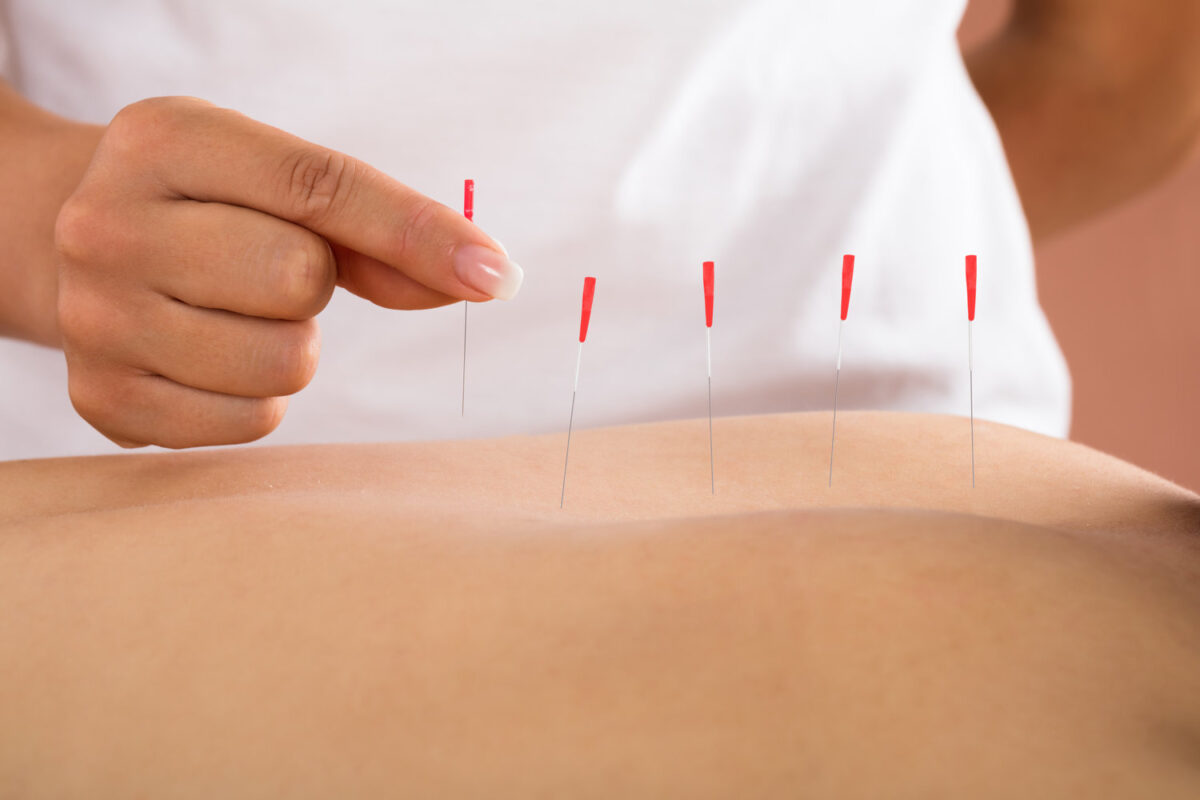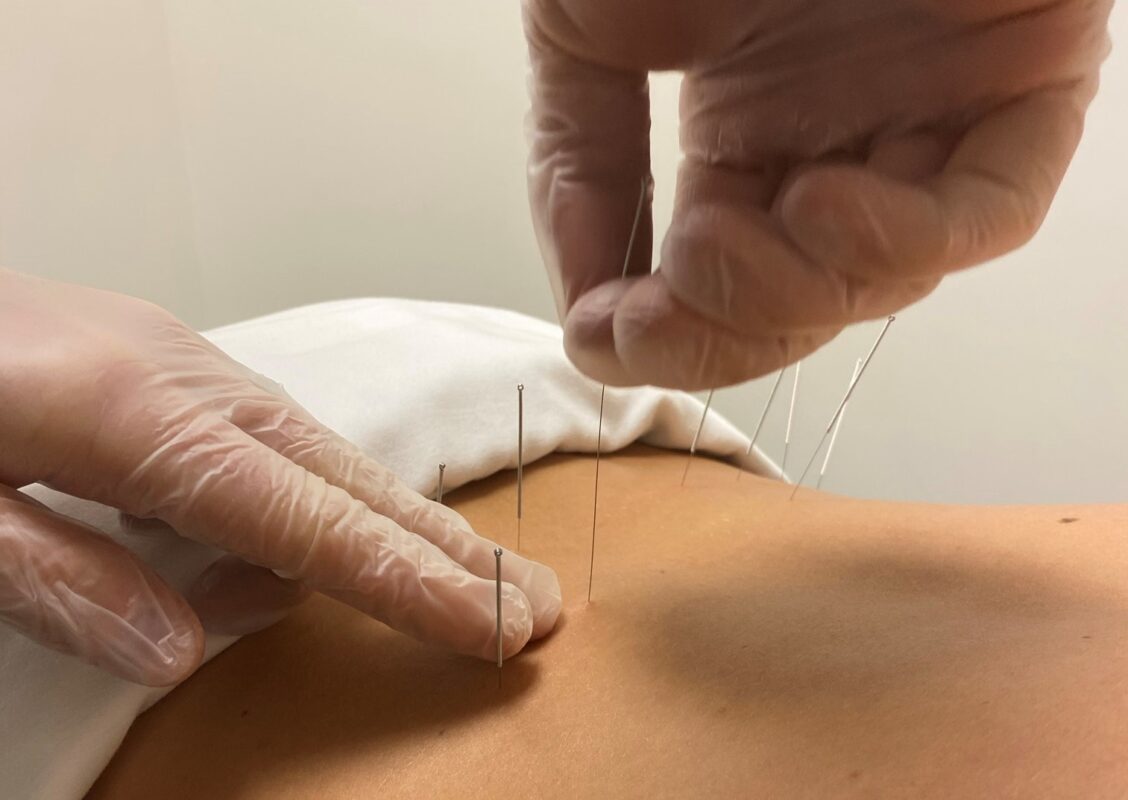
Dry needling is a treatment performed by skilled, trained physical therapists, certified in the procedure. A thin monofilament needle penetrates the skin and treats underlying muscular trigger points for the management of neuromusculoskeletal pain and movement impairments.
Dry needling can be used for a wide variety of musculoskeletal issues, such as shoulder, neck, heel, hip and back pain. While research indicates dry needling is a safe and effective approach for treating and managing pain, some insurance companies may not reimburse for the procedure.
Book your sessionIt’s important to note dry needling is not the same as acupuncture. It uses similar tools, but that’s where the similarities end. Dry needling is performed by different practitioners with different training. Acupuncture is based on Eastern medicine, while dry needling is rooted in Western medicine and evaluation of pain patterns, posture, movement impairments, function and orthopedic tests.
Dry needling treats muscle tissue, and its goal is to reduce pain, inactivate trigger points and restore function. It rarely is a standalone procedure. Rather, it often is part of a broader physical therapy approach incorporating other traditional physical therapy interventions into treatment.
Book your session
FAQs
Dry needling is a therapeutic technique in which a trained physical therapist inserts small, sterile filament needles into the skin and muscle directly at a myofascial trigger point. This generates a twitch response, helping release muscle tension and pain.
Active trigger points consist of multiple contraction knots within a muscle, and they can develop due to injury, musculoskeletal dysfunction and overuse. Active trigger points impair a person’s ability to lengthen, strengthen or contract the muscle. As a result, the muscle shortens and compresses the structure around it, causing pain.
Dry needling can be used to treat a variety of musculoskeletal issues, including: neck, back and shoulder pain; arm pain (tennis elbow, carpal tunnel, golfer’s elbow); headaches (migraines and tension-type); jaw and dental pain; buttock and leg pain (sciatica, hamstring strains, calf tightness/spasms).
Although they use the same thin filament needles, acupuncture and dry needling are two very different treatments. In contrast to most schools of acupuncture, dry needling is strictly based on Western medicine principles and research.
Acupuncture is used to treat Traditional Chinese Medical diagnoses of visceral and systemic dysfunction, while dry needling is used to assess and treat myofascial pain. Dry needling relieves pain by inactivating trigger points within muscles.
The needle used in the procedure is very thin and most patients don’t even feel it penetrate the skin. The twitch response usually elicits a very brief (less than a second) painful response. Some patients describe this feeling as a little electrical shock or cramping sensation. This twitch response is a positive and desirable reaction. Pain may also be felt in the referral zone, also and expected response to treatment.
Yes, we only use sterile, disposable needles.
Most patients report feeling sore following the procedure. Symptoms are usually described as sore muscles near the treatment area and in the areas of referred pain. Typically, the soreness lasts a few hours up to two days. Over this time, we may recommend applying heat or ice over the area, gentle stretching, and/or modifying your daily activities, depending on your individual response to the treatment and how sore you feel.
Typically, patients notice a positive reaction within a few visits.